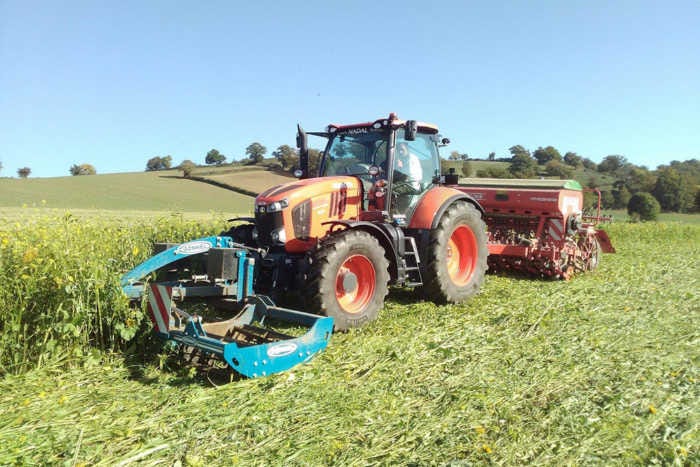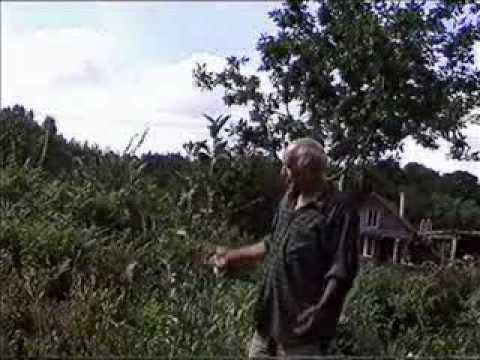Quite a bit about what follows discusses animal rearing, for meat or milk. I’m principally vegetarian but as a Permaculture engineer I have to work with the reality of today’s agricultural world and the people who farm. Going in shouting that we need to eat less meat, which we do, isn’t going to get me anywhere except slung out into the manure heap. We’re talking about a transition towards sustainable farming and doing this with farmers who tend, for many good reasons, to be somewhat conservative. They won’t change what they do unless for good reasons and even better after someone else has shown them that something works.
After a bit of a sleepless night I found myself once again at the agricultural college in front of the young farmers I mentioned in the last article :
I’ve been trying to figure out how to get them interested. As I mentioned the last time a big problem for farmers here and elsewhere is low income, too many hours and too much paperwork. Sounds like a good start, discuss how they can make more money by wasting less. No good, they are young farmers and at the moment they work the statutory maximum of 34 hours a week and they are paid the normal wage for a young farmer. So basically they are employed by someone who works maybe 70 or 80 hours a week for little money and who has to spend a ridiculous amount of time filling in forms.
So I got on with a series of presentations which show how step by step we can change our farms and take them towards sustainable agroforestry. I’ve got a slight problem because I don’t know what some of these things are called in English so I’ll use the French terms (the links to films are on Youtube so you can get the subtitles) and hopefully you can work it out.
By the way, before I start, you’ll probably have heard that in order to ‘save the climate’ we need to eat less meat? This would seem to suggest that beef cattle produce more methane than dairy cows, this would be surprising. It’s more likely that telling people to eat less meat is an easier sell than telling them to eat less cheese :-) Mixed messages are confusing. The other point is not all the students are running cattle, some are market gardeners or pig farmers. This isn’t a problem it just means designing the appropriate agroforestry system.
This is how it went:
Change how the the animals are pastured and move to pâturage tournant dynamique. This means keeping the animals on a small area of land for a short period, this is done by either creating paddocks or using a movable electric fence and drinking trough.
The time spent in one paddock area ranges in general from half a day to 3 days, this approach means a much better management of the pasture and improves it’s quality and quantity.
So good so far, better pasture means healthier animals, fewer visits from the vet and less buying in of feed supplements.
Now we get a nice tweak here because those farmers who prefer the electric fence do so because it’s easy to take down and then they can top the grass and control the growth of plants that the cows don’t eat. The tweak being changing the system a bit more so they don’t have to do this. As follows:
Mixed grazing, if you run horses and cows you get several advantages, the horses eat stuff not liked by the cows. The horses have fewer internal parasites when run with cattle than when by themselves. The horses are another, and I don’t like the word, product. Around here two big farms have been taken over by riding schools, they no longer produce food. Mixed grazing would mean the land was not just being used as horse feed but would also produce food.
Cover crops, in general people raising animals will have adjoining fields put to different crops to supplement the grass pasture. Maize, different grains, beans, peas, beetroot, soya,luzerne etc. Standard practice is to plough, seed, fertilise and use synthetics to control ‘weeds’. Direct sowing into cover crops means the soil is protected in between crops, there are fewer problems with ‘weeds’ and there are other benefits to the maincrop such as easier root penetration, nitrogen availability from leguminous leys etc.
Ploughing isn’t great, it uses a lot of diesel, it destroys soils and their processes, it compacts and a ploughed field will lose soil through wind, rain and solar erosion. No-till systems avoid this and I’m a big fan of using a crimper ‘FACA’ roller on a cover crop and direct seeding into narrow furrows. The crimped cover crop is flattened and the stalks are crimped, not cut. They are now a mulch that will slowly die and return to the soil.
Yes a big tractor, but the system uses much less diesel and improves the soil. The nitrogen fixing plants release nitrogen to the growing crop so less need to buy in synthetic nitrogen, less need to spray to control ‘weeds’, the soil is protected while the main crop grows up, the roots of the cover crop die off providing feed for the soil organisms and tunnels for the main crop roots.
Then we start working out how to get more trees into the system and move towards agroforestry which has quite a few advantages :
More biodiversity which helps with ‘pest’ control, soil building and means more ecological resilience and stability.
The trees create useful microclimates that help when it’s hot and dry.
The branches that are cut are chipped to provide mulch.
The trees produce fruit or nuts or timber, this means extra income for the farmer.
The soils have a better structure, essential nutrients are in better supply, reducing synthetic inputs. The trees help reduce erosion.
The trees improve water availability for the crops by increasing local humidity, they also act as windbreaks.
The temperature can be up to 20% lower when trees are present.
In general we see more birds, pollinating insects and wildlife in general.
We also see a lot of positive interactions between the trees, the fungi mycelium and the main crops. They say a picture is worth a thousand words so instead of explaining the thing here is a link to a film of an old student of mine who is an agricultural engineer. He presents a field that was sown with rye, field beans and sainfoin, the whole field was sown at the same time but the field is less and less narrow meaning that the trees are increasingly near the crop, the last part of the field is 28 metres wide. As Hervé points out he is working fields in an area which is particularly hot and dry and the soil is very stony. The results in the more narrow part are pretty impressive and demonstrate how the mycelial network is essential to plant growth, it’s really worth watching!
Putting all the above together means alley between trees cropping in a crimped mulch including nitrogen fixing plants and the crop is followed by mixed grazing before a second crop is sown.
Then we scale. Agroforestry includes broadscale alley cropping through to forest gardening, yes the latter are a form of agroforestry. In between the two we have systems like the Corbett ‘coppice orchard’ which is designed for market gardeners.
I don’t intend to write about forest gardens there is enough stuff out there already with Martin Crawford being a leading figure. I’ve created several of them but there is no way that I could convince a broadscale farmer to transform their fields into forest gardens, I can convince them to adopt broadscale agroforestry, no till alley cropping with mixed grazing in a paddock system. Even that is a difficult task but thanks to increasing numbers of farmers willing to test out different systems showing the way I can encourage others to flow away from synthetic chemical plough farming and go step by step towards more and more sophisticated agroforestry systems.
We often see a sort of conflict between those who contend, rightly, that we need to plant trees to ‘save the climate’ and farmers who see trees as an intrusion in their fields. With agroforestry it’s win/win for everyone. It’s just fascinating how we can increase yields and farm incomes, reduce inputs, improve biodiversity and soils just through some relatively simple changes. One of the problems we face is different people presenting good alternatives but not going the full monty and showing what happens if you put them all together, this is where Permaculture design comes in, we put it all together, combine stuff to get lots of synergistic benefits. Not just for us but the biosphere in general.











with 1 or 2 maybe but it's becoming a bit of a farce. I've worked with the agriculture college before and it's always a very disorganised from their side and very last minute. I think this'll be the last time I get involved with them
I've still got another session with them. In general the group was divided between those who weren't interested and those who were. A bit of a struggle but positive for the latter group!